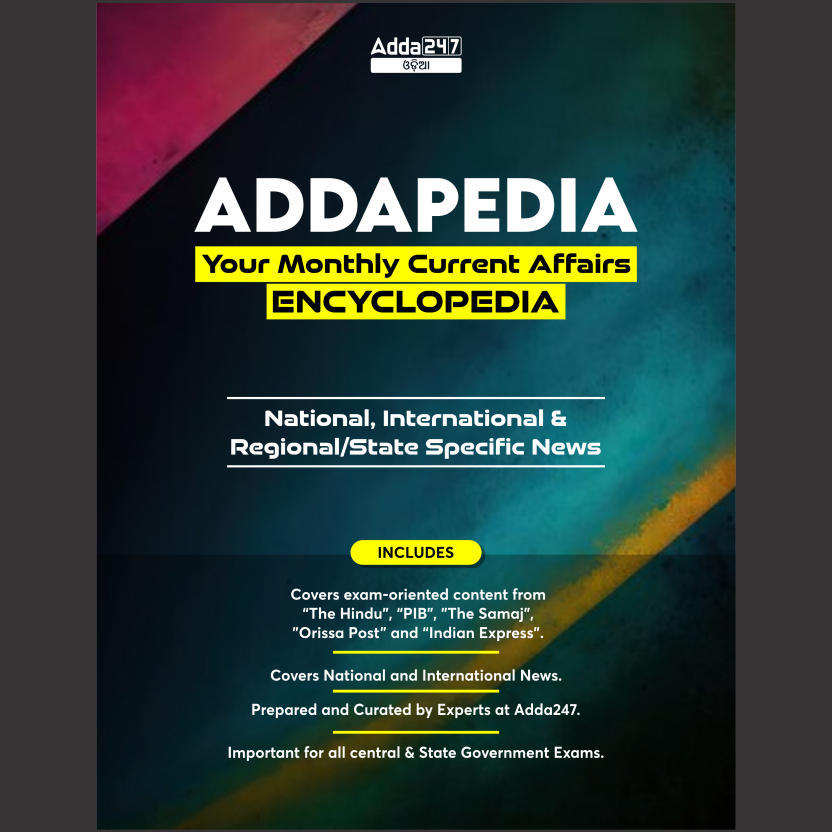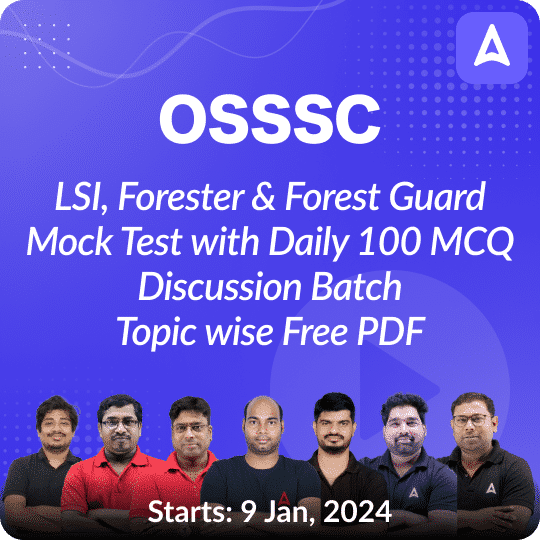Environmental awareness and climate-related knowledge are crucial for candidates appearing in exams such as OSSSC RI,ARI, Amin, SFS, ICDS Supervisor. Here are the top 30 multiple-choice questions with answers to help you prepare for these exams at a moderate difficulty level:
Top 30 Environment and Climate MCQs for OSSSC RI,ARI, Amin, SFS, ICDS Supervisor Exams
A solid understanding of environmental concepts and climate-related issues is essential for candidates preparing for OSSSC RI,ARI, Amin, SFS, ICDS Supervisor exams. Regular practice with these multiple-choice questions will not only enhance your knowledge but also improve your chances of scoring well in the examination. Good luck with your preparation!
- Which of the following statements about black carbon is true?
a) Black carbon is produced both naturally and by human activities.
b) It’s a major contributor to climate change.
c) Black carbon particles strongly absorb sunlight and give soot its black color.
d) Technologies that can reduce global black carbon emissions are not available today.
Ans. d - Which summit created the concept of the Kyoto Protocol?
a) Kyoto Protocol
b) Montreal Protocol
c) Basel Convention
d) Ramsar Convention
Ans. a - The Cartagena Protocol is related to:
a) Bio-safety
b) Trans-boundary movement of hazardous wastes
c) Climate change
d) Ozone depletion
Ans. a - Which of the following is not matched correctly?
a) Ponzan Summit: 2008
b) Bali Summit: 2002
c) Earth Summit: 1992
d) Montreal Protocol: 1987
Ans. b - The concept of Sustainable Development emerged after the:
a) Basel Convention on Hazardous Wastes, 1989
b) Bali Summit: 2002
c) Earth Summit: 1992
d) Montreal Protocol: 1987
Ans. c - In which country did the concept of ‘Environmental Impact Assessment’ emerge?
a) Switzerland
b) USA
c) Japan
d) Germany
Ans. b - What is a carbon footprint?
a) Emission of carbon dioxide from daily human activities.
b) Emission of carbon monoxide because of vehicles.
c) Acid rain
d) Soil degradation
Ans. a - Which of the following is NOT a secondary consumer?
a) Frog
b) Lizard
c) Rabbits
d) None of these
Ans. c - ‘DODO’ is a:
a) Insect
b) Bird
c) Fish
d) Ape
Ans. b - What kind of biome is found on Mount Kilimanjaro, Mount Rockies, Mount Alps, and Mount Himalayas?
a) Savanna Biome
b) Taiga Biome
c) Mediterranean Biome
d) Alpine Tundra Biome
Ans. d - Among the following crops, which one is the most important anthropogenic source of both methane and nitrous oxide?
a) Cotton
b) Rice
c) Sugarcane
d) Wheat
Ans. b) Rice - Which of the following pairs of Wetland/Lake and their Location is correctly matched?
a) Hokera Wetland: Punjab
b) Renuka Wetland: Himachal Pradesh
c) Rudrasagar Lake: Tripura
d) Sasthamkotta: Tamil Nadu
Ans. c) Rudrasagar Lake: Tripura - “Climate Action Tracker,” which monitors emission reduction pledges, is a:
a) Database created by a coalition of research organizations
b) Wing of the International Panel of Climate Change
c) Committee under the United Nations Framework Convention on Climate Change
d) Agency promoted and financed by the United Nations Environment Programme and World Bank
Ans. a) Database created by a coalition of research organizations - Which of the following statements about climate-related initiatives is correct?
a) The Climate Group is an international non-profit organization focused on climate action.
b) The International Energy Agency and the Climate Group launched the global initiative “EP100”.
c) EP100 aims to bring together leading companies committed to driving innovation in energy efficiency.
d) All the statements are correct.
Ans. d) All the statements are correct. - What function of wetlands best reflects the analogy “If rainforests and tropical forests are the lungs of the Earth, then surely wetlands function as its kidneys”?
a) The water cycle in wetlands involves surface runoff, subsoil percolation, and evaporation.
b) Algae form the nutrient base upon which various organisms thrive.
c) Wetlands play a vital role in maintaining sedimentation balance and soil stabilization.
d) Aquatic plants absorb heavy metals and excess nutrients.
Ans. c) Wetlands play a vital role in maintaining sedimentation balance and soil stabilization. - In the context of WHO guidelines for air quality, which statements are correct?
a) The 24-hour mean of PM2.5 should not exceed 15 µg/m³, and the annual mean should not exceed 5 µg/m³.
b) In a year, the highest levels of ozone pollution occur during inclement weather.
c) PM10 can penetrate the lung barrier and enter the bloodstream.
d) Excessive ozone in the air can trigger asthma.
Ans. a) The 24-hour mean of PM2.5 should not exceed 15 µg/m³, and the annual mean should not exceed 5 µg/m³. - With reference to “Gucchi” sometimes mentioned in the news, which statements are correct?
a) It is a fungus.
b) It grows in some Himalayan forest areas.
c) It is commercially cultivated in the Himalayan foothills of northeastern India.
d) All the statements are correct.
Ans. d) All the statements are correct. - Regarding polyethylene terephthalate (PET), which statements are correct?
a) Its fibers can be blended with wool and cotton fibers to reinforce their properties.
b) Containers made of it can be used to store any alcoholic beverage.
c) Bottles made of it can be recycled into other products.
d) Articles made of it can be easily disposed of by incineration without causing greenhouse gas emissions.
Ans. c) Bottles made of it can be recycled into other products. - Which of the following is not a bird?
a) Golden Mahseer
b) Indian Nightjar
c) Spoonbill
d) White Ibis
Ans. a) Golden Mahseer - Which of the following are nitrogen-fixing plants?
a) Alfalfa
b) Chickpea
c) Clover
d) Purslane (Kulfa)
Ans. d) Purslane (Kulfa) - “Biorock technology” is associated with:
a) Restoration of damaged coral reefs
b) Development of building materials using plant residues
c) Identification of areas for exploration/extraction of shale gas
d) Providing salt licks for wild animals in forests/protected areas
Ans. a) Restoration of damaged coral reefs - The “Miyawaki method” is well known for:
a) Promotion of commercial farming in arid and semi-arid areas
b) Development of genetically modified flora using gardens
c) Creation of mini forests in urban areas
d) Harvesting wind energy on coastal areas and sea surfaces
Ans. c) Creation of mini forests in urban areas - Regarding organizations related to environment and sanitation, which statements are correct?
a) The India Sanitation Coalition is funded by the Government of India and the World Health Organization.
b) The National Institute of Urban Affairs provides innovative solutions to address the challenges of Urban India.
c) Both statements are correct.
d) Neither statement is correct.
Ans. b) The National Institute of Urban Affairs provides innovative solutions to address the challenges of Urban India. - Which of the following has been constituted under the Environment (Protection) Act, 1986?
a) Central Water Commission
b) Central Ground Water Board
c) Central Ground Water Authority
d) National Water Development Agency
Ans. c) Central Ground Water Authority - Which statement best describes the ‘Polar Code’?
a) It is the international code of safety for ships operating in polar waters.
b) It is an agreement among countries around the North Pole regarding the demarcation of their territories.
c) It is a set of norms to be followed by countries whose scientists undertake research studies in the North Pole and South Pole.
d) It is a trade and security agreement among member countries of the Arctic Council.
Ans. a) It is the international code of safety for ships operating in polar waters. - Which of the following is NOT a greenhouse gas?
a) Oxygen
b) Carbon dioxide
c) Methane
d) Nitrous oxide
Answer: a) Oxygen - What is the term for the gradual increase in the Earth’s average temperature over time?
a) Global cooling
b) Global warming
c) Climate variability
d) Greenhouse effect
Answer: b) Global warming - Certain species of which of the following organisms are well known as cultivators of fungi?
a) Ant
b) Cockroach
c) Crab
d) Spider
Ans. a) Ant - Which of the following is/are cause(s) of acid rain?
a) Carbon monoxide
b) Nitrogen oxide
c) Ozone
d) Sulphur dioxide
Ans. d) Sulphur dioxide - Which of the following is an example of a renewable energy technology that uses sunlight to generate electricity?
a) Solar panels
b) Wind turbines
c) Hydroelectric dams
d) Nuclear reactors
Answer: a) Solar panels
















